It’s a big, luxurious—but expensive—electric pickup truck with a huge battery.
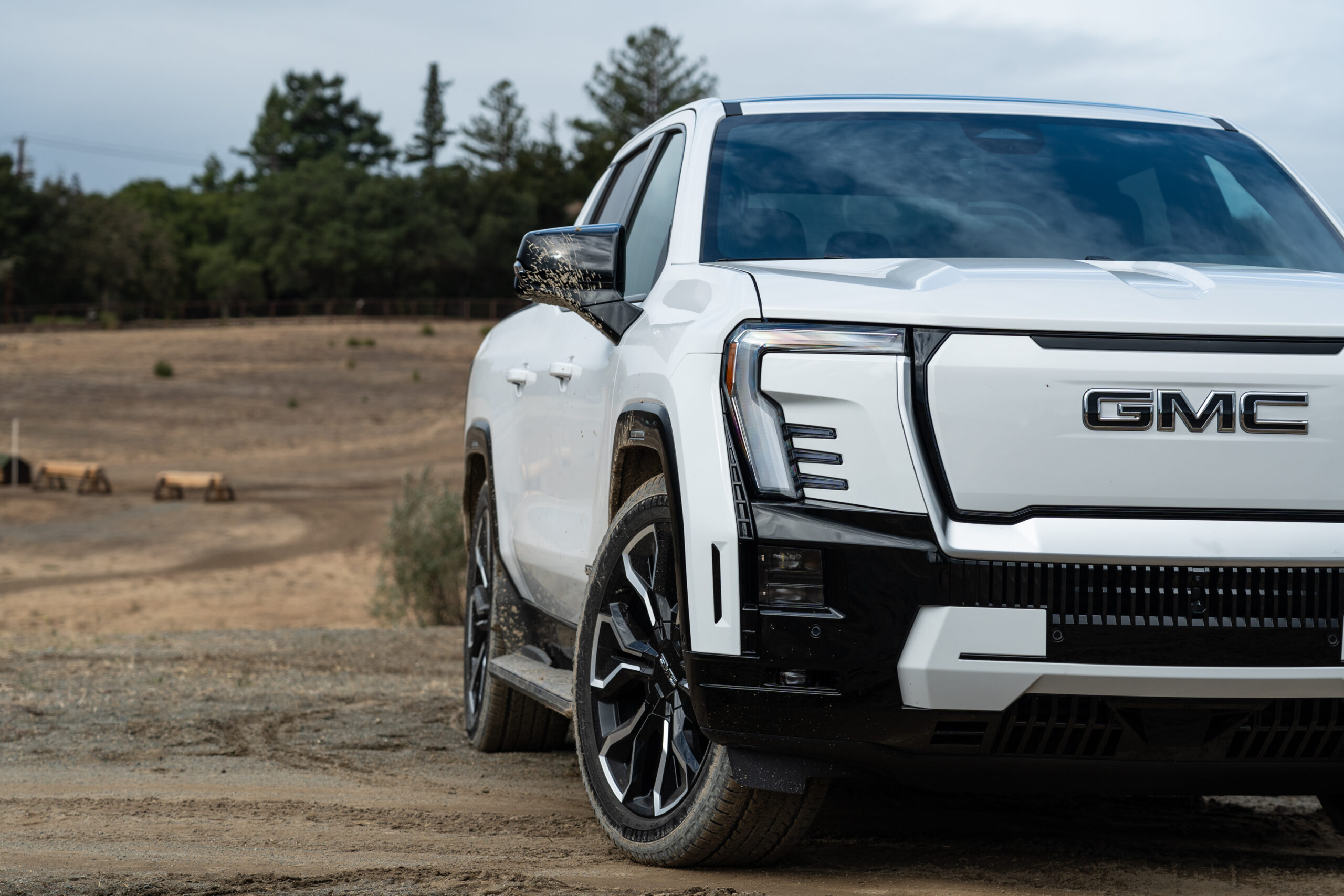
Have automakers missed the mark with electric versions of their big, expensive pickup trucks? Credit: Tim Stevens
Electric trucks aren’t exactly blowing up the sales charts right now. A market that’s increasingly skeptical of EVs in general isn’t helping, but that age-old work-minded segment that looked set for a reinvention just a few years ago now seems increasingly reluctant to change.
Rivian’s excellent R1T hasn’t taken the market by storm, while Ford’s F-150 Lightning isn’t reinventing the work truck landscape the way many (including myself) had hoped. On the Chevrolet side of the equation, the Silverado EV likewise hasn’t challenged the sales of its internally combusted siblings.
General Motors is bringing another contender to the fray, the 2025 GMC Sierra EV Denali, and if you thought the $94,500 initial price on the Silverado RST First Edition was a bit much, prepare for more sticker shock, as the Max Range Denali starts at $100,495. Is the solution to electric truck woes an even more expensive model? After a few days in the saddle, I’m not so sure.
Let’s start with the basics, which will all sound quite familiar if you’ve read our coverage of the Silverado EV. That’s because they are effectively the same truck rolling on the same running gear. There’s a maximum of 760 hp (567 kW) and 785 lb-ft (1,064 Nm) of torque available, more than enough to make this truck’s nose point to the sky and your passenger’s eyes open wide on a hard acceleration.
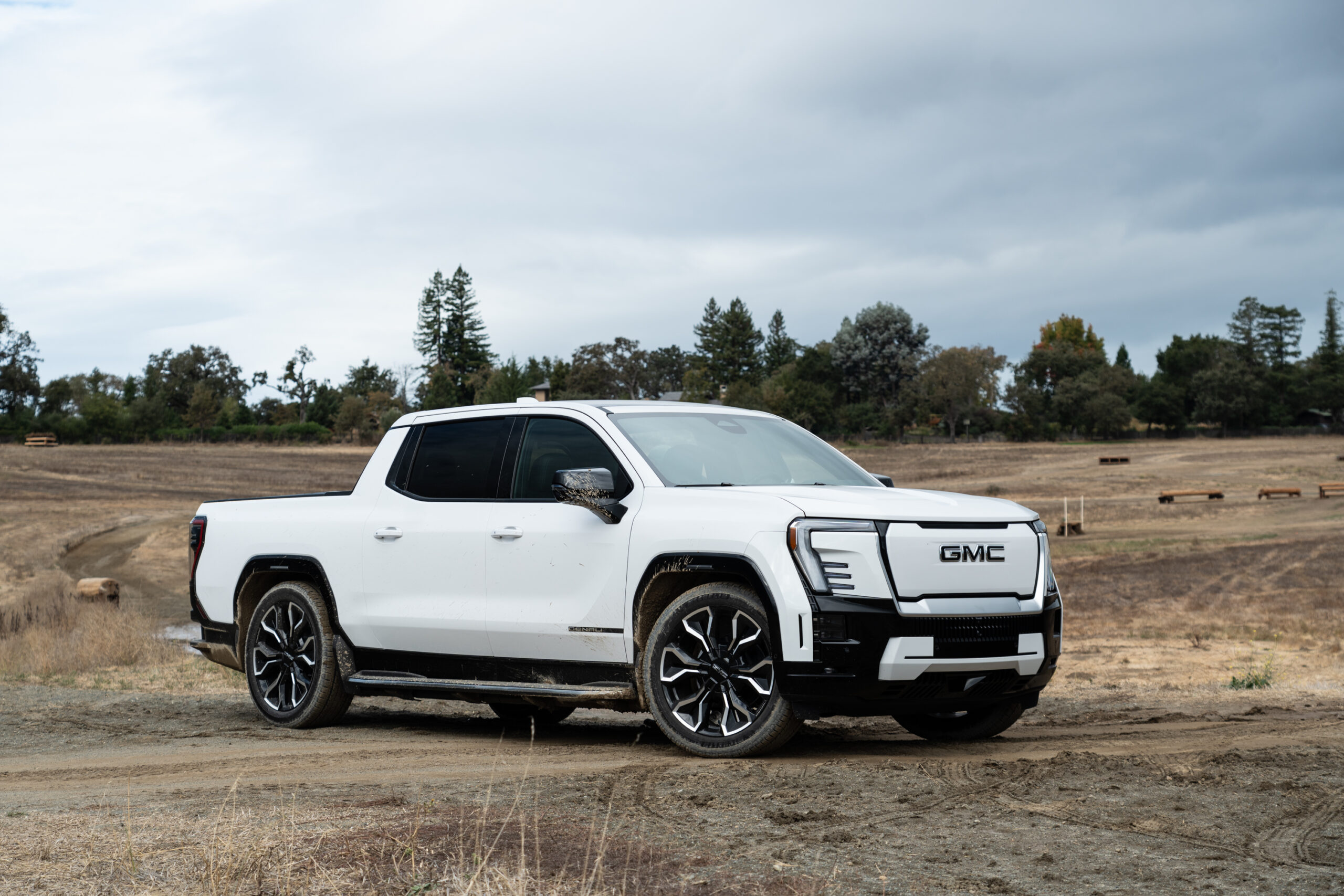
Ars Video
How Scientists Respond to Science Deniers
But sprinting to 60 mph (98 km/h) in 4.5 seconds is a useless novelty in a truck like this. More important is its rated towing and hauling performance, and there, the numbers aren’t exactly world-class, but they’re more than enough for most. Maximum trailering is 10,500 lbs (4,763 kg), down from the Sierra 1500’s 13,300-lb (6,033 kg) max rating. Hauling is 1,350 lbs (612 kg) in the 5-foot, 11-inch bed (1,803 mm), again down from its internal combustion counterpart’s 2,230-lb (1,012 kg) payload rating.
If towing is your thing, there’s the not-insignificant concern of range. The Sierra EV Denali is EPA-rated for a whopping 460 miles (740 km) with the Max Range battery pack. Those who don’t need to go so far may want to opt for the Extended Range battery, which drops the maximum range to 390 miles (628 kg) and saves you $7,500.
Regardless of which pack you choose, for now, the only trim for a 2025 Sierra EV is Denali, the word synonymous with trucks offering the most presence and premium materials. That’s certainly the case here.
On the outside, the Sierra EV shares a lot of its shape with the Silverado EV. No surprise there. But look closer and you’ll find as many differences as similarities.
The biggest shift is in the way the Crew Cab portion of the truck meets the bed. In the Silverado, there’s a shapely, gradual transition that makes it look far more futuristic than your average pick-’em-up. With the Sierra, GMC designers went with more of a truck-like shape, a vertical line defining the end of the people part and the beginning of the cargo area.
The midgate is clever
However, that division isn’t locked in place. As on the Silverado EV, the front of the bed is integrated with the back of the cab, and GM’s engineers created a clever divider: the midgate. Dropping the midgate creates a bed long enough for a full sheet of plywood or drywall with the tailgate up—so long as you’re willing to fold down the rear seats.
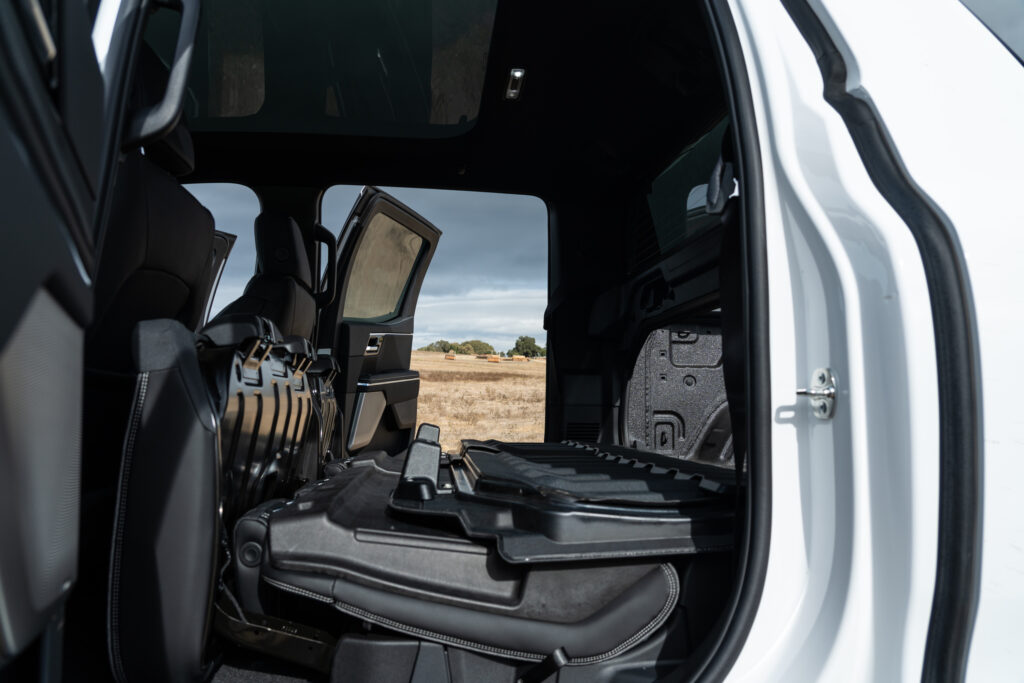
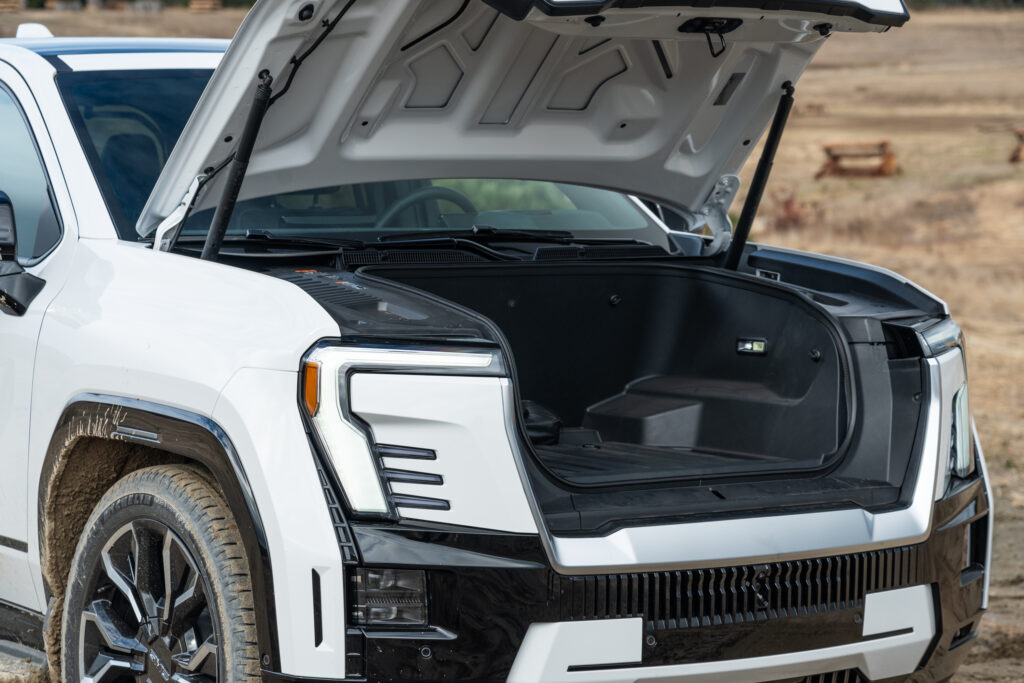
The midgate is a great addition.Tim Stevens
Losing the engine means there’s room for a lockable frunk up front.Tim Stevens
If you still need to seat someone out back, that midgate offers a 60/40 split, creating room for longer cargo while still saving some seating. It’s a genuinely ingenious solution, one of those things that, once you use it, you’ll never want a truck that lacks it.
But all that is similar to the Silverado, which can be had with exactly the same features. It has the same commodious frunk, too. 11 cubic feet (311 L) of storage isn’t quite as roomy as the 14.1 cubic foot (400 L) space up under the F-150 Lightning’s hood, but it’s similarly equipped with lights and power outlets.
If you want to really see what separates the Sierra EV Denali from the Silverado EV, you need to climb up into the cabin. The running boards offer a grippy, rubberized surface and make it easy to clamber into the driver’s seat, which is predictably wide and comfortable.
The upholstery and other materials are a step above the Silverado, the highlight being the strip across the dash that not only looks like wood but is actually made of the stuff. Everything looks and feels nice enough but is still lacking compared to the fresh aesthetic and premium touchpoints found inside the R1T.
My favorite interior feature is the clever, configurable cargo area between the seats. Trucks have long offered big spaces for stuff under the armrest, big enough for gun safes or refrigerators, but the Sierra EV takes that further by extending the open cavity forward to the center console.
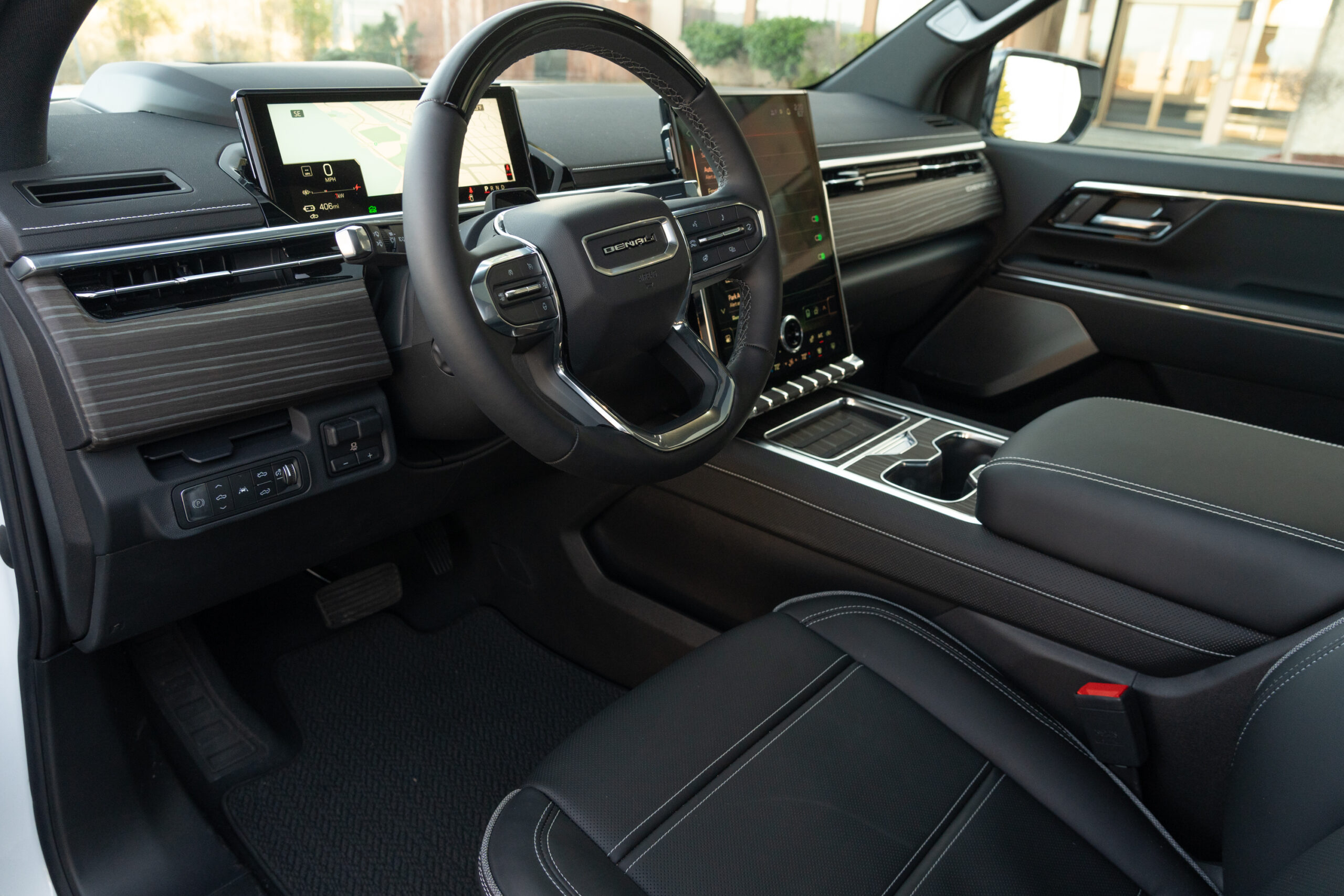
Tim Stevens
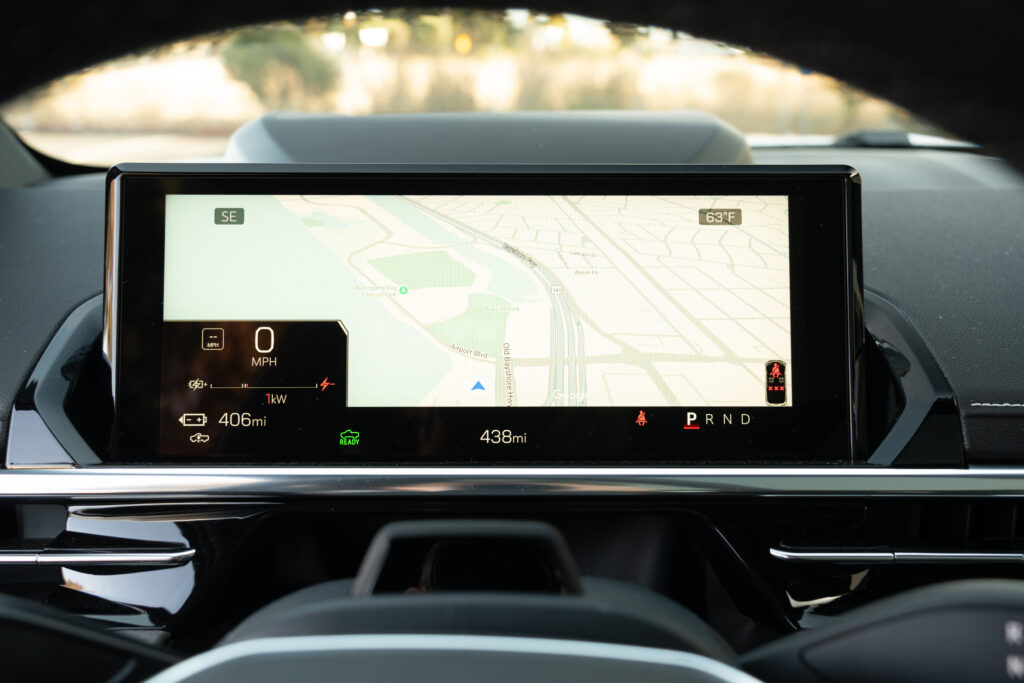
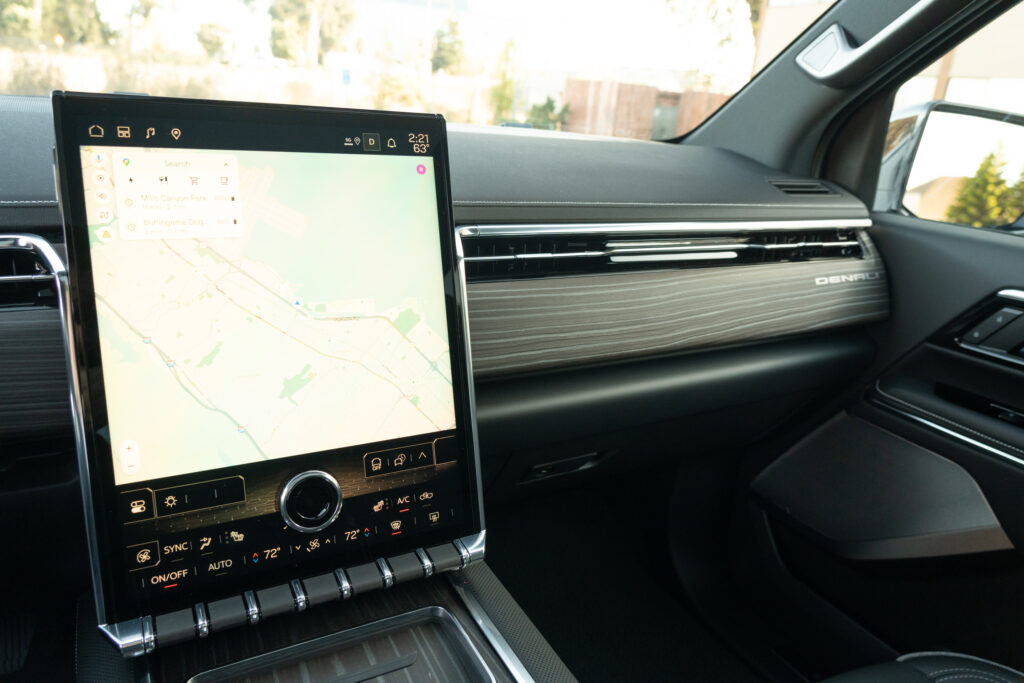
The Sierra EV’s main instrument panel.Tim Stevens
Tim Stevens
The use of a column-mounted shifter frees up space for a pair of trays. It all looks standard enough, with two big cupholders to the rear and a wireless charging pad for your smartphone at the front. But, push on a metal-look button, and the cupholders glide back into the armrest. The wireless charging pad slides forward into the dash, exposing another big cavity for anything you want to keep out of view.
Now, wireless charging pads are most useful in cars with wireless Android Auto and Apple CarPlay. Sadly, neither is present here. Smartphone projection is not on the menu. Instead, you’re stuck with GM’s Android Automotive-based system, which brings Google’s power into the dashboard and makes it easy to access popular apps like YouTube Music or Spotify right from your dashboard.
However, if you’d like to use Apple Maps or easily access any of the media available on your phone while driving, you’re out of luck.
The interface is clean and easy and ran well during my testing. I was particularly impressed by the ease of customization. Want a shortcut to bring up the 360 camera at the top of the screen? Just drag it from the vehicle controls to the top and it sticks there. You can rearrange other controls, too, just by tapping and dragging.
The software all worked well, and the Sierra EV Denali drove well, too. Despite the massive 24-inch wheels and tires, ride quality was reasonably good for a truck of this size, helped by the standard air suspension. I spent quite a bit of time winding my way through some extremely narrow roads and making U-turns in tight parking lots as I was looking for photography locations. The truck’s standard four-wheel steering was indispensable.
Not that much more expensive than the V8
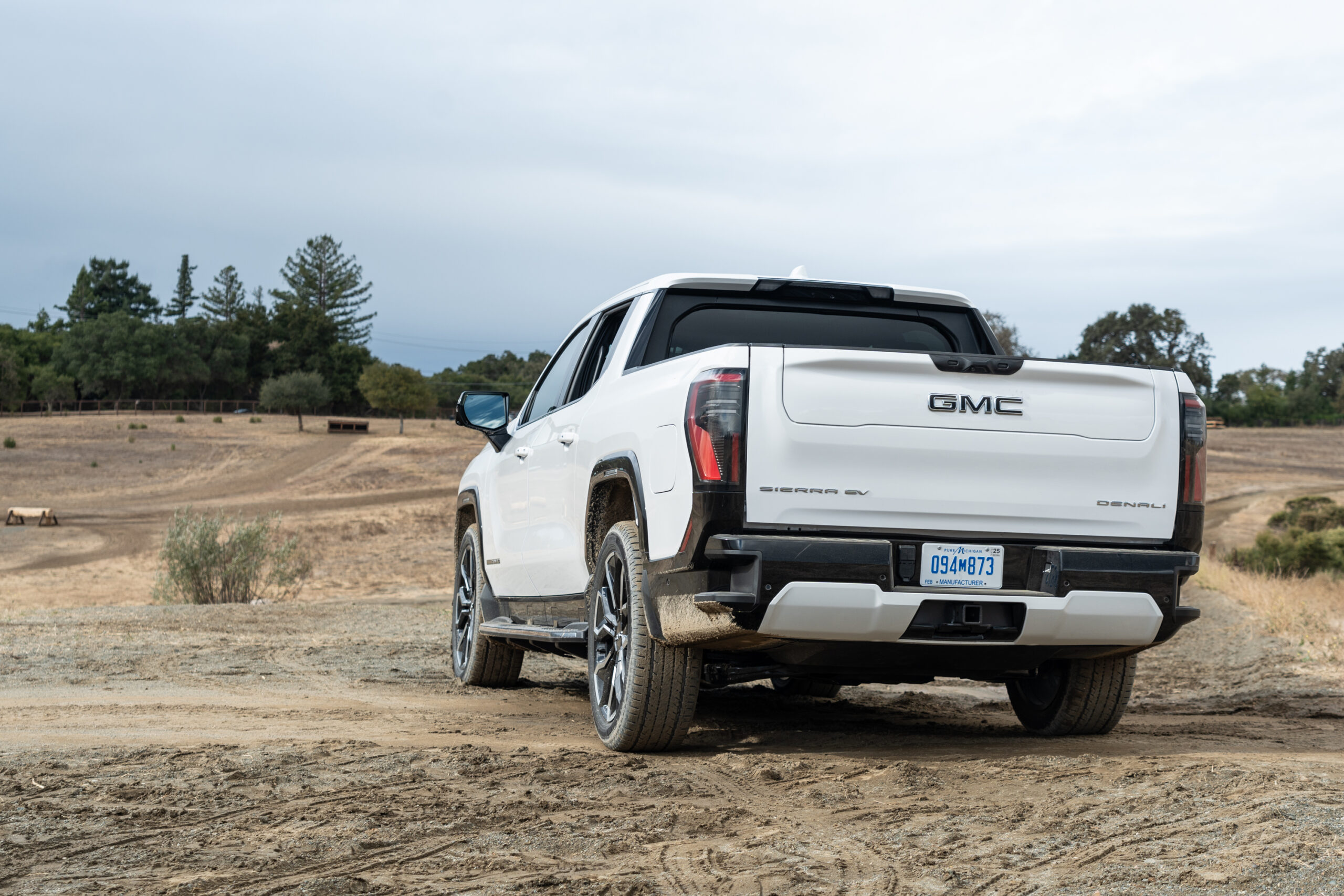
And it’s features like that, plus the ability to power a job site or even your home with GM Energy’s bidirectional charger setup, that give the Sierra EV a genuine leg up over its internal-combustion predecessor. And that’s good because it’s coming in at quite a price premium. Again, the Sierra EV Denali starts at $91,995 with the smaller Extended Range battery or $100,495 for the 460-mile Max Range battery pack. Both prices include the $2,095 destination charge.
That sounds extreme, but if you haven’t priced out a regular Denali lately, you might be surprised how small the gap is. A top-shelf Denali Ultimate with the 6.2 L V8, which makes a relatively paltry 420 hp (313 kW) and 460 lb-ft (624 Nm) of torque, has a starting price of just under $75,000. Add a few options, and you’ll soon be over $80,000. But, tick all the boxes you want, and you still won’t get air suspension or four-wheel steering, nor that must-have midgate on a gas-powered truck.
In my eye, if you’re already looking to spend upwards of $80,000 on a big, luxurious truck, the extra amenities and features of the Sierra EV are well worth kicking it up to $90,000. But that still makes this a niche-appeal machine. GMC says that lower-cost Sierra EV models will come in time, but it will take something on the opposite end of the price spectrum before the EV truck segment really starts moving.




